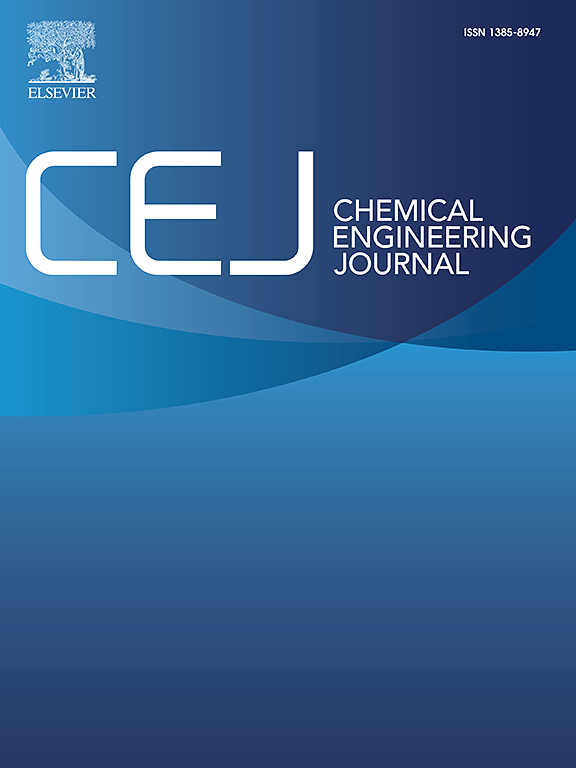Regeneration of methane splitting catalysts by interfacial hydrogenation
IF 13.3
1区 工程技术
Q1 ENGINEERING, CHEMICAL
引用次数: 0
Abstract
Methane splitting, also known as decomposition or pyrolysis, has a unique potential to accelerate the transition from the current carbon-based economy towards the foreseen hydrogen economy. Low-temperature catalytic methane splitting systems are unavailable due to fast catalyst deactivation, caused by solid carbon that encapsulates the catalyst. Catalyst regeneration must be performed to reactivate the catalyst and achieve a long-term operational lifetime. This can be accomplished by cyclically refeeding a portion of the produced hydrogen back to the catalyst, which promotes the hydrogenation of carbon atoms, preferentially at the interface between carbon deposits and catalytic nanoparticles. Interfacial hydrogenation ideally breaks the bonds that connect carbon allotrope products to the metal catalyst, causing the former to detach, and freeing the catalytic metal surface for further reaction. In this work, a proof-of-concept of this technology is provided, showing the full regeneration of a bulk-type Ni catalyst during 22 cycles of methane splitting, at 550 °C and 1 bar. Furthermore, a commercial SiO2-Al2O3-supported Ni catalyst has been used to study the regenerability of a highly active nanostructured material by interfacial hydrogenation, using different reactor designs. It has been demonstrated that regeneration is beneficial to improve the stability of Ni-based systems, at the applied working conditions. Nevertheless, tip-grown carbon nanotubes were considered as a cause of permanent deactivation, which could not be solved by refeeding hydrogen into the system.求助全文
约1分钟内获得全文
求助全文
来源期刊

Chemical Engineering Journal
工程技术-工程:化工
CiteScore
21.70
自引率
9.30%
发文量
6781
审稿时长
2.4 months
期刊介绍:
The Chemical Engineering Journal is an international research journal that invites contributions of original and novel fundamental research. It aims to provide an international platform for presenting original fundamental research, interpretative reviews, and discussions on new developments in chemical engineering. The journal welcomes papers that describe novel theory and its practical application, as well as those that demonstrate the transfer of techniques from other disciplines. It also welcomes reports on carefully conducted experimental work that is soundly interpreted. The main focus of the journal is on original and rigorous research results that have broad significance. The Catalysis section within the Chemical Engineering Journal focuses specifically on Experimental and Theoretical studies in the fields of heterogeneous catalysis, molecular catalysis, and biocatalysis. These studies have industrial impact on various sectors such as chemicals, energy, materials, foods, healthcare, and environmental protection.
 求助内容:
求助内容: 应助结果提醒方式:
应助结果提醒方式:


